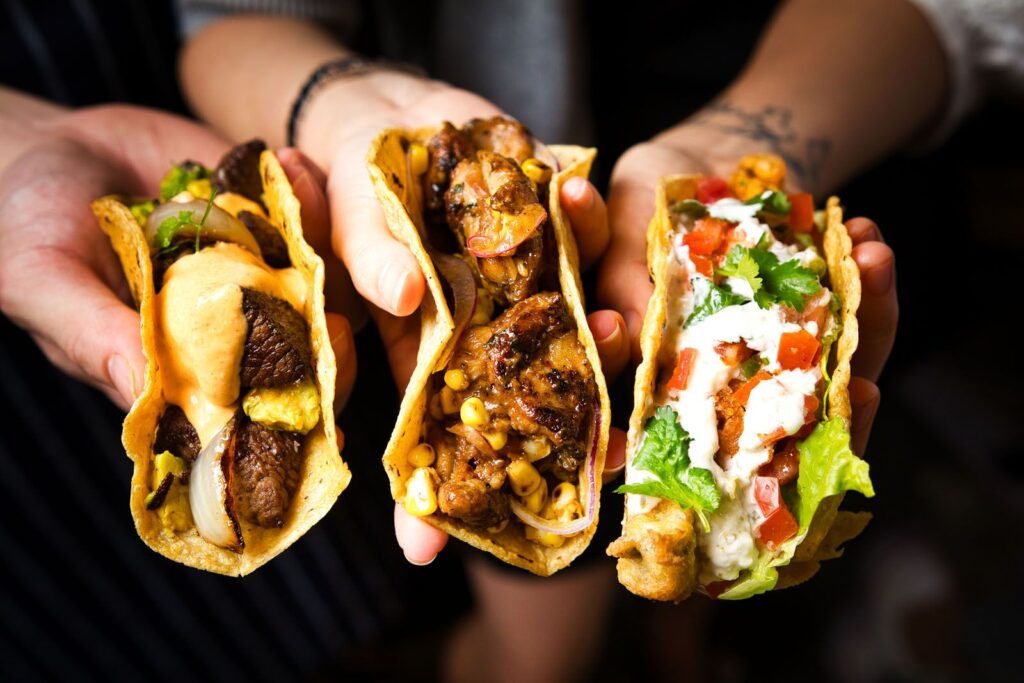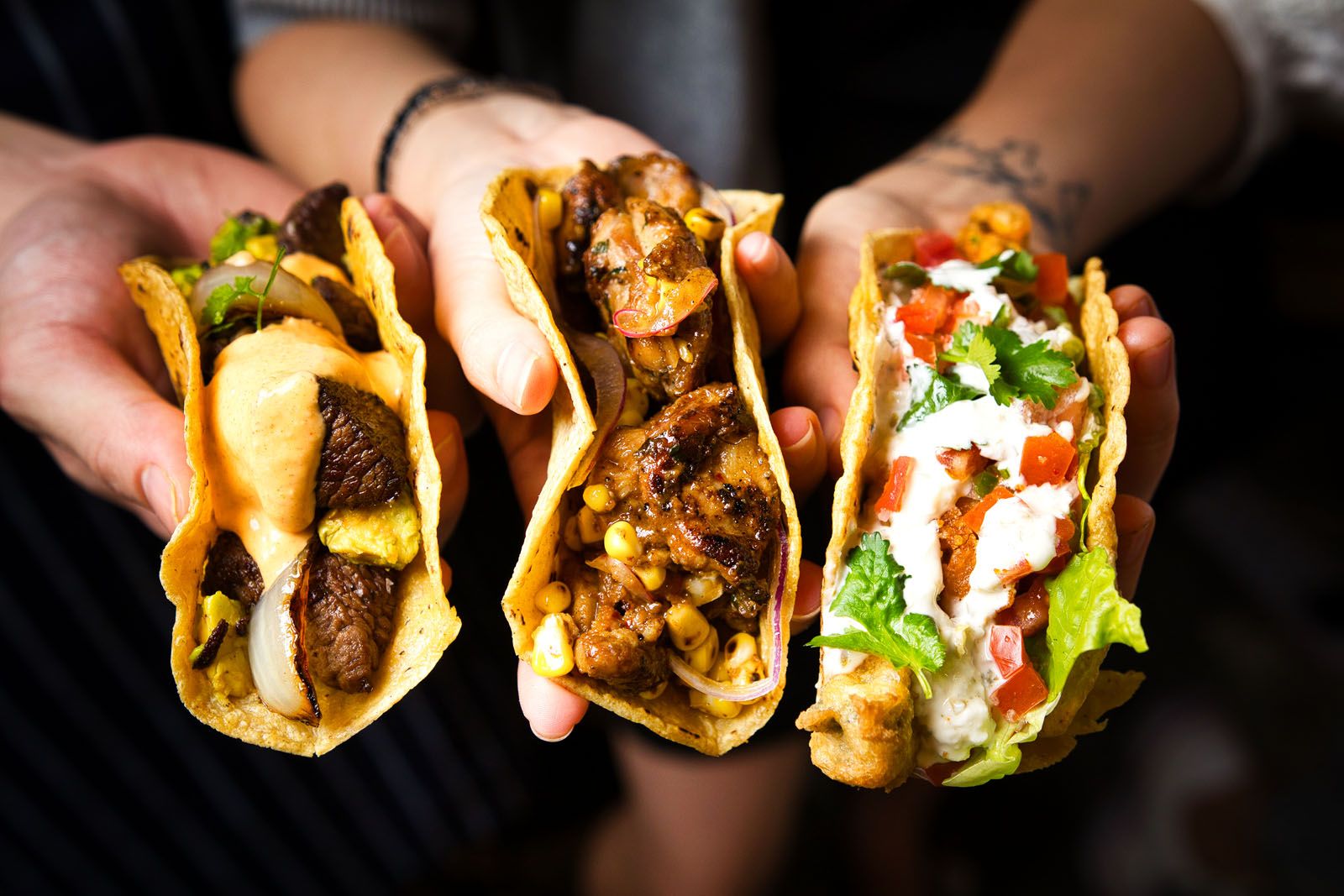
Exploring the Vibrant World of Latina Cuisine: A Culinary Journey
Latina cuisine is a vibrant tapestry woven from centuries of tradition, innovation, and cultural exchange. From the fiery spices of Mexico to the savory stews of Argentina, and the delicate seafood dishes of Peru, the culinary landscape of Latin America offers a diverse and exciting range of flavors and experiences. This article delves into the heart of Latina cuisine, exploring its origins, key ingredients, regional variations, and its growing global influence.
The Roots of Latina Cuisine
The history of Latina cuisine is deeply intertwined with the history of the Latin American continent itself. Indigenous ingredients like corn, beans, potatoes, and tomatoes formed the foundation of pre-Columbian diets. The arrival of Europeans brought new ingredients such as wheat, rice, beef, pork, and dairy products, which were gradually integrated into local culinary traditions. The transatlantic slave trade also introduced African influences, particularly in the Caribbean and Brazil, adding elements like plantains, okra, and various spices to the mix. This fusion of indigenous, European, and African influences has created the unique and complex culinary heritage that defines Latina cuisine today.
Pre-Columbian Influences
Before the arrival of Europeans, indigenous civilizations across Latin America had developed sophisticated agricultural practices and culinary techniques. The Mayans, Aztecs, and Incas cultivated a wide variety of crops and created dishes that are still enjoyed today. Corn, for example, was a staple food, used to make tortillas, tamales, and a variety of other dishes. Beans were another important source of protein, and potatoes were a key ingredient in the Andean region. These ancient traditions continue to influence Latina cuisine, with many dishes still prepared using traditional methods and ingredients.
European Contributions
The arrival of Europeans in the 15th and 16th centuries brought significant changes to the culinary landscape of Latin America. Wheat, rice, beef, pork, and dairy products were introduced, and gradually integrated into local diets. Spanish colonizers also brought their own culinary traditions, such as paella and stews, which were adapted to local ingredients and tastes. The blending of European and indigenous ingredients and techniques resulted in new and exciting dishes that are now considered staples of Latina cuisine.
African Impact
The transatlantic slave trade had a profound impact on the culinary traditions of Latin America, particularly in the Caribbean and Brazil. Enslaved Africans brought with them their own culinary knowledge and ingredients, such as plantains, okra, and various spices. These ingredients were incorporated into local dishes, adding new flavors and textures to the mix. African influences are particularly evident in dishes like feijoada (Brazil) and mofongo (Puerto Rico), which showcase the creativity and resilience of African culinary traditions in the Americas.
Regional Variations in Latina Cuisine
Latin America is a vast and diverse continent, and its culinary traditions reflect this diversity. Each region has its own unique ingredients, dishes, and culinary techniques. From the spicy flavors of Mexico to the hearty stews of Argentina, and the delicate seafood dishes of Peru, the regional variations in Latina cuisine are endless.
Mexican Cuisine
Mexican cuisine is perhaps the most well-known and widely appreciated form of Latina cuisine around the world. It is characterized by its bold flavors, vibrant colors, and use of chilies, spices, and herbs. Key ingredients include corn, beans, avocados, tomatoes, and various types of meat. Popular dishes include tacos, enchiladas, mole, and guacamole. [See also: Authentic Mexican Recipes]. Mexican cuisine has been recognized by UNESCO as an Intangible Cultural Heritage of Humanity, highlighting its cultural significance and historical importance.
Argentinian Cuisine
Argentinian cuisine is heavily influenced by its European heritage, particularly Spanish and Italian. Beef is a staple ingredient, and Argentina is known for its high-quality steaks and grilled meats. Asado, a traditional barbecue, is a popular social event. Other popular dishes include empanadas, pasta, and pizza. Dulce de leche, a sweet caramel spread, is a beloved dessert. The influence of Italian immigrants is particularly evident in the prevalence of pasta dishes and pizza variations, showcasing the fusion of cultures within Latina cuisine.
Peruvian Cuisine
Peruvian cuisine is considered one of the most diverse and innovative in Latin America. It is characterized by its use of fresh seafood, indigenous ingredients, and unique flavor combinations. Ceviche, a dish of raw fish marinated in lime juice, is a national favorite. Other popular dishes include lomo saltado, a stir-fry of beef, onions, and tomatoes, and aji de gallina, a creamy chicken stew. [See also: Exploring Peruvian Ceviche]. Peru’s diverse geography, from the Andes Mountains to the Amazon rainforest, contributes to the wide array of ingredients used in its Latina cuisine.
Brazilian Cuisine
Brazilian cuisine is a melting pot of indigenous, European, and African influences. Feijoada, a hearty stew of black beans and pork, is a national dish. Other popular dishes include churrasco, a barbecue of grilled meats, and moqueca, a seafood stew. Cassava, a starchy root vegetable, is a staple ingredient. Brazilian cuisine is also known for its use of tropical fruits, such as mangoes, papayas, and passion fruit. The regional variations are significant, with coastal areas emphasizing seafood and inland regions focusing on meat and hearty stews, reflecting the diverse landscape of Latina cuisine.
Key Ingredients in Latina Cuisine
Latina cuisine is characterized by its use of a wide variety of fresh, flavorful ingredients. Some of the key ingredients include:
- Corn: A staple ingredient in many Latin American countries, used to make tortillas, tamales, and other dishes.
- Beans: An important source of protein, used in soups, stews, and side dishes.
- Tomatoes: A versatile ingredient used in sauces, salsas, and salads.
- Chilies: Used to add heat and flavor to a variety of dishes.
- Avocados: A creamy fruit used in guacamole, salads, and sandwiches.
- Plantains: A starchy fruit that can be fried, baked, or boiled.
- Rice: A staple grain used in a variety of dishes.
The Global Influence of Latina Cuisine
Latina cuisine has gained increasing popularity around the world in recent years. Mexican restaurants are ubiquitous in many countries, and Peruvian cuisine has also gained a strong following. The vibrant flavors, fresh ingredients, and diverse dishes of Latina cuisine have captured the hearts and palates of food lovers everywhere. The accessibility of ingredients and the adaptability of recipes have contributed to its global spread. [See also: The Rise of Latin American Food in Global Markets].
Factors Contributing to Global Popularity
- Flavor and Variety: The bold and diverse flavors of Latina cuisine offer a wide range of culinary experiences.
- Fresh Ingredients: The emphasis on fresh, locally sourced ingredients appeals to health-conscious consumers.
- Cultural Significance: The rich cultural heritage associated with Latina cuisine adds to its appeal.
- Adaptability: Many Latina cuisine dishes can be easily adapted to suit different dietary needs and preferences.
Conclusion
Latina cuisine is a vibrant and diverse culinary tradition that reflects the rich history and cultural heritage of Latin America. From the indigenous ingredients and techniques to the European and African influences, Latina cuisine is a testament to the power of cultural exchange and culinary innovation. Its increasing global popularity is a testament to its delicious flavors, fresh ingredients, and cultural significance. Exploring the world of Latina cuisine is a journey of discovery, offering a taste of the diverse and exciting flavors of Latin America. Whether you’re enjoying a plate of tacos in Mexico, savoring a steak in Argentina, or sampling ceviche in Peru, Latina cuisine offers a culinary experience that is both delicious and enriching. The future of Latina cuisine looks bright, with chefs and home cooks continuing to innovate and share the flavors of Latin America with the world.

